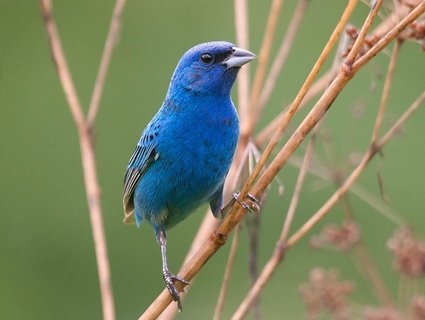A day doesn’t go by at The Wood Thrush Shop that we are not asked “what’s wrong with the hummingbirds?” “I don’t see any coming to my feeders.” “Are they here”?
All of our summer resident Ruby-throated hummingbirds are here and well into their first or even second nesting of the season by now. Like Bluebirds they all don’t start nesting at the same time. There could be as much as a month difference in the first nesting phase of the earlier arrivals in March and April and the later arrivals in late April to mid-May.
The nesting phase is the reason people generally see far less of hummingbirds now as opposed to mid-July through September when they are seen so readily at feeders. One must remember hummingbirds do not come all the way from Central and South America for sugar water. It’s of little need to them during the first half of their summer residency. They are very satisfied with nectar from flowering plants, and insects for protein. Hummingbird feeders are not in high demand at this time and will serve only for quick visits and a brief drink. When nesting is near conclusion in mid to late July and early August that is when hummers begin visiting feeders with frequency and intensity to fatten up in preparation for the long migration back to Central and South America.
With that in mind keep fresh nectar in the feeder but do not fill to capacity. Small amounts are recommended now to decrease waste and major cleaning of feeders. In warmer weather with temperatures near 90, nectar is only good for 2-3 days at a time. If your feeder is getting full sun you may want to adjust to a shadier situation or be prepared to change the nectar even more frequently.
Remember to only use plain white table sugar to make nectar, no brown or raw natural sugar, no honey, and no color. A 1 part sugar to 4 parts water ratio is the perfect solution. Making it sweeter is no more appealing or beneficial to the birds.
Be patient, hummingbirds will begin visiting feeders when they are ready. We should see an uptick in activity around mid-July.






